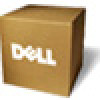Dell Broadcom NetXtreme Family of Adapters Broadcom NetXtreme II Network Adapt - Page 66
iSCSI Protocol: Broadcom NetXtreme II Network Adapter User Guide, iSCSI Boot
 |
View all Dell Broadcom NetXtreme Family of Adapters manuals
Add to My Manuals
Save this manual to your list of manuals |
Page 66 highlights
iSCSI Protocol: Broadcom NetXtreme II Network Adapter User Guide Back to Contents Page iSCSI Protocol: Broadcom NetXtreme II Network Adapter User Guide iSCSI Boot iSCSI Crash Dump iSCSI Offload iSCSI Boot Broadcom NetXtreme II Gigabit Ethernet adapters support iSCSI boot to enable network boot of operating systems to diskless systems. The iSCSI boot allows a Windows or Linux operating system boot from an iSCSI target machine located remotely over a standard IP network. For both Windows and Linux operating systems, iSCSI boot can be configured to boot with two distinctive paths: non-offload (also known as Microsoft initiator) and offload (Broadcom's offload iSCSI driver or HBA). Configuration of the path is set with the HBA Boot Mode option located on the General Parameters screen of the iSCSI Configuration utility. See Table 1 for more information on all General Parameters screen configuration options. Supported Operating Systems for iSCSI Boot The Broadcom NetXtreme II Gigabit Ethernet adapters support iSCSI boot on the following operating systems: Windows Server 2008 32-bit and 64-bit (supports offload and non-offload paths) Windows Server 2008 R2 64-bit (supports offload and non-offload paths) Linux RHEL 5.5 and later, SLES 11.1 and later (supports offload and non-offload paths) SLES 10.x and SLES 11 (only supports non-offload path) iSCSI Boot Setup The iSCSI boot setup consists of: Configuring the iSCSI Target Configuring iSCSI Boot Parameters Preparing the iSCSI Boot Image Booting Configuring the iSCSI Target Configuring the iSCSI target varies by target vendors. For information on configuring the iSCSI target, refer to the documentation provided by the vendor. The general steps include: 1. Create an iSCSI target. 2. Create a virtual disk. 3. Map the virtual disk to the iSCSI target created in step 1. 4. Associate an iSCSI initiator with the iSCSI target. 5. Record the iSCSI target name, TCP port number, iSCSI Logical Unit Number (LUN), initiator Internet Qualified Name (IQN), and CHAP authentication details. 6. After configuring the iSCSI target, obtain the following: 7. Target IQN 8. Target IP address 9. Target TCP port number file:///T|/htdocs/NETWORK/BroadCom/71921/NetXtremeII/en/iscsi.htm[9/26/2012 3:29:03 PM]















